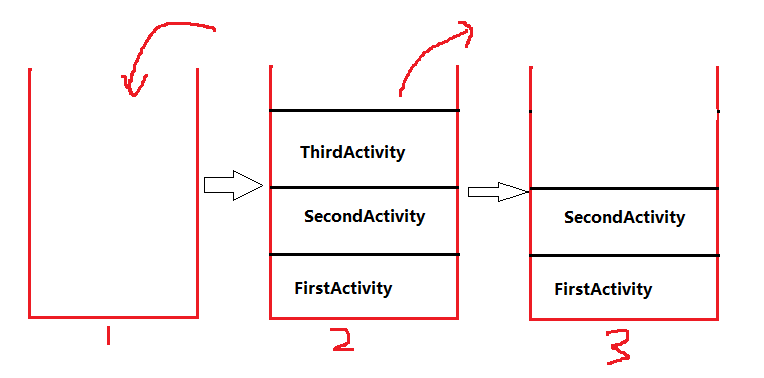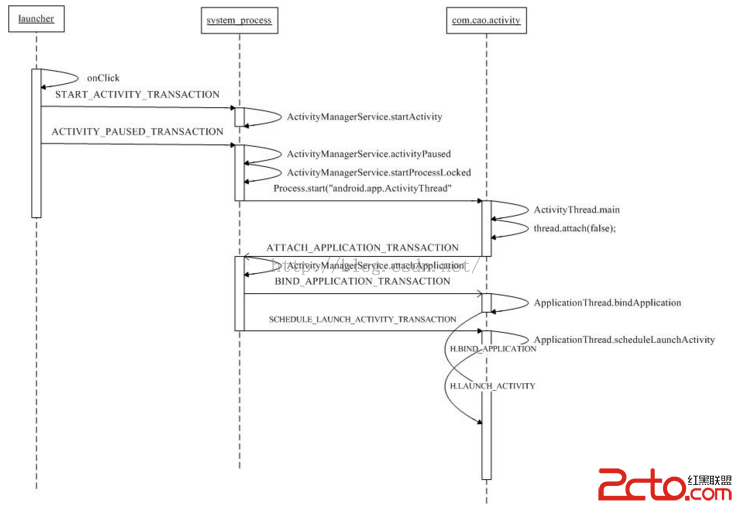我之前做分頁都是用GridView和ActivityGroup實現的.因為覺得TabHost不好用,還有就是自己水平差的原因吧.如果幫的話,重寫view任何問題都可以解決,呵呵,下面請看實現過程,其實很簡單.
針對TabHost的運用,我就不多講解了,網上例子好多,或者你也可以下載我的Demo查看,不過先聲明,寫的不好.
代碼片段:
[java]
public class MyActivity extends TabActivity {
private TabWidget tabWidget;
/** Called when the activity is first created. */
public void onCreate(Bundle savedInstanceState) {
super.onCreate(savedInstanceState);
setContentView(R.layout.main);
Resources res = getResources(); // Resource object to get Drawables
final TabHost tabHost = getTabHost(); // The activity TabHost
TabHost.TabSpec spec; // Resusable TabSpec for each tab
Intent intent; // Reusable Intent for each tab
// Create an Intent to launch an Activity for the tab (to be reused)
intent = new Intent().setClass(this, ArtistsActivity.class);
// Initialize a TabSpec for each tab and add it to the TabHost
spec = tabHost
.newTabSpec("artists")
.setIndicator("Artists",
res.getDrawable(R.drawable.ic_tab_artists))
.setContent(intent);
tabHost.addTab(spec);
// Do the same for the other tabs
intent = new Intent().setClass(this, AlbumsActivity.class);
spec = tabHost
.newTabSpec("albums")
.setIndicator("Albums",
res.getDrawable(R.drawable.ic_tab_artists))
.setContent(intent);
tabHost.addTab(spec);
intent = new Intent().setClass(this, SongsActivity.class);
spec = tabHost
.newTabSpec("songs")
.setIndicator("Songs",
res.getDrawable(R.drawable.ic_tab_artists))
.setContent(intent);
tabHost.addTab(spec);
tabHost.setCurrentTab(2);
View v;
tabWidget = tabHost.getTabWidget();
for (int i = 0; i < tabWidget.getChildCount(); i++) {
// 獲取tabview項
v = tabWidget.getChildAt(i);
// 設置tab背景顏色
v.setBackgroundResource(android.R.color.white);
// 獲取textview控件,(默認為白色)
TextView textView = (TextView) v.findViewById(android.R.id.title);
textView.setTextColor(Color.BLACK);
// 默認選項要處理
if (tabHost.getCurrentTab() == i)
v.setBackgroundResource(R.drawable.renren_sdk_pay_repair_btn);
}
// tabchanged的監聽
tabHost.setOnTabChangedListener(new OnTabChangeListener() {
// tabId顯示的是:newTabSpec裡面的值
@Override
public void onTabChanged(String tabId) {
// 首先把所有的view背景初始化了.
for (int i = 0; i < tabHost.getTabWidget().getChildCount(); i++) {
View v = tabHost.getTabWidget().getChildAt(i);
// 設置tab背景顏色
v.setBackgroundResource(android.R.color.white);
// 選中的進行處理
if (tabHost.getCurrentTab() == i) {
v.setBackgroundResource(R.drawable.renren_sdk_pay_repair_btn);
}
}
}
});
}
}
作者:jj120522
 Android 吸入動畫效果實現分解
Android 吸入動畫效果實現分解
 Android--Activity的生命周期(二)
Android--Activity的生命周期(二)
 Android開發環境搭建之Eclipes (Mars)
Android開發環境搭建之Eclipes (Mars)
 Android加殼原理分析
Android加殼原理分析